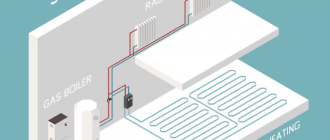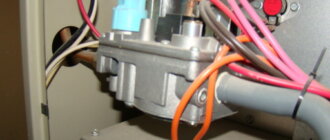Avoid These Mistakes When Programming Your Thermostat
Are you tired of high energy bills and a home that is never quite the right temperature? It might be time to take a closer look at your thermostat programming. Properly programmed thermostats can save you money, increase comfort, and even help extend the life of your HVAC system. However, many homeowners make common mistakes when it comes to programming their thermostats. In this blog post, we will explore those mistakes and provide tips for proper thermostat programming so that you can maximize energy efficiency in your home. Let’s get started!
What is Thermostat Programming?
Thermostat programming is the process of setting your thermostat to adjust your home’s temperature according to a pre-determined schedule. This means that you can set different temperatures for different times of the day or week, depending on when you are typically at home and when you are away.
This type of programming allows homeowners to optimize their energy usage by avoiding unnecessary heating or cooling while they’re not at home. By using thermostat programming, HVAC systems will only run when needed, reducing energy consumption and lowering utility costs. Plus, it helps maintain consistent indoor comfort levels by adjusting the temperature based on pre-set preferences.
The Benefits of Proper Thermostat Programming
Proper thermostat programming has numerous benefits that can improve the energy efficiency of your HVAC system while also enhancing your overall comfort. One of the key advantages is cost savings – by utilizing a programmed schedule, you can reduce unnecessary heating and cooling cycles when no one is at home or during sleeping hours.
Another benefit is improved comfort levels – with properly scheduled temperature adjustments, you can ensure that your home stays at optimal temperatures throughout the day without any manual adjustments. This means less time spent fiddling with the thermostat and more time enjoying a comfortable indoor environment.
Additionally, proper thermostat programming helps to extend the lifespan of your HVAC system by reducing wear and tear on its components. By avoiding excessive cycling and ensuring consistent temperature settings, you can prevent unnecessary strain on your equipment.
Proper thermostat programming provides convenience, cost savings, enhanced comfort levels, and better longevity for your HVAC system. With these benefits in mind, it’s important to take a proactive approach to managing your home’s temperature settings through regular maintenance and smart scheduling practices.
Common Mistakes in Thermostat Programming
Thermostat programming is a great way to increase energy efficiency and save money on your HVAC bills. However, there are some common mistakes that people make when programming their thermostats. One of the most common mistakes is setting incorrect temperature settings.
When you set the wrong temperature for your home, it can cause your HVAC system to work harder than necessary, resulting in wasted energy and higher utility bills. Another mistake people make is overriding their thermostat program frequently.
If you override the program too often, it defeats the purpose of having a programmed thermostat altogether. Not utilizing zoned heating and cooling is another commonly made error. By not taking advantage of zoned heating and cooling capabilities, you’re wasting energy by heating or cooling rooms that aren’t even being used.
Ignoring regular maintenance tasks such as changing air filters can also negatively impact your system’s performance over time. It’s important to recognize these common mistakes when programming your thermostat so that you can avoid them and enjoy maximum energy savings from your HVAC system.
Mistake 1: Incorrect Temperature Settings
The first mistake that homeowners make when programming their thermostats is setting incorrect temperature settings. This can lead to wasted energy and higher utility bills.
One common error is setting the temperature too high or low for extended periods of time. For example, turning off your HVAC system completely while you’re away from home may seem like a good idea, but it can actually cause your system to work harder than necessary when you return and adjust the temperature significantly.
Another mistake is not adjusting the temperature based on outdoor conditions. If it’s hot outside, it’s important to set a cooler indoor temperature to avoid overworking your cooling system. On colder days, raising the indoor temperature slightly can help keep your heating system running efficiently.
It’s also important to consider different rooms in your house when setting temperatures. Some areas may receive more sunlight or have better insulation than others, so adjusting temperatures accordingly can lead to increased comfort and energy efficiency.
By avoiding these common mistakes in thermostat programming, homeowners can save money on their utility bills without sacrificing comfort in their homes.
Mistake 2: Overriding the Program Frequently
One of the most common mistakes in thermostat programming is overriding the program frequently. While it may seem like a good idea to adjust the temperature manually whenever you feel too cold or too hot, doing so can actually compromise your energy efficiency goals.
When you override your thermostat’s programming, you disrupt its ability to regulate your home’s temperature efficiently. This means that your HVAC system has to work harder than necessary to keep up with frequent changes in temperature.
Moreover, constantly making manual adjustments can also lead to inconsistencies and discomforts within different areas of your home. For example, if one member of your household prefers a cooler living room while another likes it warmer, manually adjusting the thermostat every time someone leaves or enters will create unnecessary conflicts.
To avoid this mistake and ensure optimal comfort and energy savings for everyone in your home, set a schedule that works for all occupants and stick with it. If necessary, make minor adjustments instead of overriding the entire program altogether.
Mistake 3: Not Utilizing Zoned Heating and Cooling
One of the most common mistakes people make when programming their thermostats is not utilizing zoned heating and cooling. Zoning allows you to control the temperature in different areas or zones of your home separately, which can help save energy and money.
With traditional heating and cooling systems, it’s often difficult to maintain a consistent temperature throughout the entire house because some rooms may be hotter or cooler than others. By dividing your home into zones, you can adjust the temperature for each zone based on its specific needs.
For example, if you have a room that gets a lot of sunlight during the day, it may require less heating in winter and more cooling in summer than other parts of your home. By zoning this area separately from other rooms that don’t have as much exposure to sunlight, you can ensure that each zone is receiving optimal temperature control without wasting energy.
Not utilizing zoned heating and cooling is a missed opportunity for homeowners looking to improve their HVAC efficiency. It’s an investment worth considering if saving on energy costs while maintaining comfort is important to you.
Mistake 4: Ignoring Regular Maintenance
Ignoring regular maintenance is one of the biggest mistakes you can make when it comes to programming your thermostat. Many homeowners overlook this crucial aspect, thinking that their thermostat will continue to function properly without any attention.
However, just like any other HVAC system component, thermostats also require regular maintenance to perform at their best. Dust and debris buildup can cause malfunctions or even damage internal components over time.
To avoid such issues, make sure that your thermostat gets a proper cleaning at least once every six months. You can do this by simply wiping down the surface with a soft cloth and making sure there is no dust accumulation in hard-to-reach areas.
Additionally, if you have an older model or notice any signs of wear and tear on your unit, don’t hesitate to call for professional servicing. Regular tune-ups will not only ensure optimal performance but also extend the lifespan of your thermostat and save energy costs in the long run.
Tips to Properly Program Your Thermostat
Proper thermostat programming can help you save money on your energy bills and make your home more comfortable.
To ensure that you get the most out of your HVAC system, here are some tips to properly program your thermostat:
Tip 1: Set It and Forget It
The key to effective thermostat programming is consistency. Once you’ve set a schedule that works for you, stick with it! Avoid constantly adjusting the temperature or overriding the program manually as this can disrupt its efficiency.
Tip 2: Take Advantage of Smart Thermostats
Smart thermostats are a great investment because they allow for remote access and control through mobile devices. You can adjust settings from anywhere, receive alerts if there’s an issue with the system, and even use voice commands to make changes.
Tip 3: Regularly Update Your Settings
As seasons change or household routines shift, don’t forget to update your thermostat accordingly. Simply tweaking a few degrees can have a significant impact on your energy usage and comfort levels.
Tip 4: Schedule Regular Maintenance
Regular maintenance not only ensures that your HVAC system runs smoothly but also helps optimize its performance. An annual inspection by a professional technician will identify any potential issues before they become major problems.
By following these tips to properly program your thermostat, you’ll be able to enjoy optimal energy efficiency in addition to saving money on utility bills.
Conclusion:
Programming your thermostat properly can help you save energy and money while ensuring that your home is always at a comfortable temperature. By avoiding common mistakes such as incorrect temperature settings, frequent overrides of the program, not utilizing zoned heating and cooling, and ignoring regular maintenance, you can ensure that your HVAC system operates efficiently.
To properly program your thermostat, remember to set it and forget it by establishing a consistent schedule for heating and cooling. Take advantage of smart thermostats to automate the process even further. Regularly update your settings based on changes in weather patterns or occupancy. Schedule regular maintenance with an HVAC professional to keep your system running smoothly throughout the year.
By following these tips and avoiding common mistakes in thermostat programming, you will be able to achieve greater energy efficiency in your home while reducing monthly utility bills!





